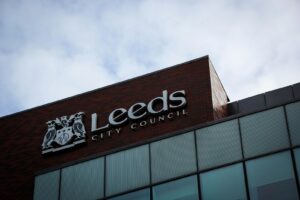When I was interviewed to be chief executive of the Social Investment Business (SIB) in the summer of 2011 I was asked whether I had any questions. One was top of my list. Was the financial performance of Futurebuilders really as strong as SIB professed it to be? As I kept probing, the panel became a little irritated with my persistence. ‘Why do you keep asking about this?’ one panel member asked. ‘Because I don’t believe it,’ I replied, ‘and neither does the wider market.’
This lack of transparency was, and in many ways still is, a problem for social investment. The hype has tended to outweigh the facts. And as I recently said, we need to remember why we are here. Being transparent and sharing evidence, even if it isn’t always pretty, is an important part of doing our job properly.
I now know that there was a fascinating and important story to tell about Futurebuilders. Thankfully, this story has now been told in a new report A Tale of Two Funds, written by The Boston Consulting Group (BCG).
We have managed Futurebuilders, on behalf of the Office for Civil Society, since 2008. The fund provided loan financing to voluntary and community sector organisations in England to help them bid for, win and deliver public service contracts. Although lending to the sector was not unheard of, Futurebuilders represented a bold new direction. It tested new boundaries of how and where social finance could work. Organisations such as Beyond Autism, Birkenhead YMCA and Hull Women’s Network received investment from Futurebuilders to help them grow and do more.
‘Unless we can show what we’ve done in the past, how are we going to persuade more investors, such as Santander, to enter this space in the future?’
So what did the report find? First, the numbers – Futurebuilders disbursed £145m to 369 organisations including £117m of loans. Of the loans, approximately 40% are now closed (either paid down or written off) representing 20% (£20m) of the capital. The fund has so far returned £47m to the Cabinet Office.
The analysis focused on the 20% of the loan book that is now closed. This yielded a moderately negative rate of return. Given the pioneering nature of the fund, the fact that it was targeting organisations unused to accepting loan finance, and that the period included a major financial shock this performance is arguably more positive than might otherwise be expected.
From their analysis, BCG were able to make six recommendations to help inform the design of future funds. Frankly, the recommendations look obvious to many observers now but it serves as a reminder of just how far we have travelled in ten years.
Through this report, and by recently sharing our data with Engaged X for their analysis, I hope our commitment to transparency is clear. I was delighted when Big Society Capital announced their recent Open Conversation about Transparency as it will help to set the standard for what we and our peers should be doing.
I wanted to tell the story of Futurebuilders because I think it is important that pioneering organisations such as SIB share what we have learnt. Unless we can show what we’ve done in the past, how are we going to persuade more investors, such as Santander, to enter this space in the future?
Social investment is moving into an era of less talk and more action and we need to be unafraid to open the books if this market is to be more effective and more credible. Only by being open about our successes, and our failures, will we ensure that organisations like Beyond Autism, Birkenhead YMCA and Hull Women’s Network can access the finance they need in the future.
















Leave a Reply